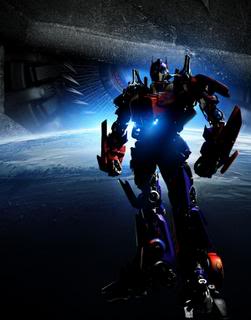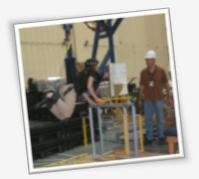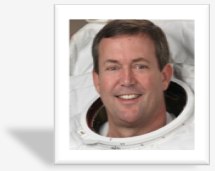The NES Virtual Student Symposium provides the opportunity for up to two teams of two students to share the results of an investigation or NASA design challenge with NASA scientists, engineers, technicians and educators. Participation in the Virtual Student Symposium is a prerequisite for getting invited to the all-expenses-paid NES National Student Symposium to be held at a NASA field center on May 2-5, 2012. The investigation or design challenge may be conducted as a classroom activity or done by students on their own, based on their own interests. The investigation or design challenge must relate to a NASA Explorer Schools teaching module or NASA Now episode on the NASA Explorer Schools Virtual Campus.
Tag: High School Student Opportunity
2011 OPTIMUS PRIME Spinoff Award Video Contest
 NASA has opened registration for the 2011 OPTIMUS PRIME Spinoff Award Contest. Featuring OPTIMUS PRIME, the leader of the popular TRANSFORMERS brand, the contest highlights spinoffs from NASA technologies that are used on Earth. The goal is to help students understand the benefits of NASA technology to their daily lives. Last year’s contest was open to students in grades 3-8 and resulted in 76 video submissions from over 190 students in 31 states.
NASA has opened registration for the 2011 OPTIMUS PRIME Spinoff Award Contest. Featuring OPTIMUS PRIME, the leader of the popular TRANSFORMERS brand, the contest highlights spinoffs from NASA technologies that are used on Earth. The goal is to help students understand the benefits of NASA technology to their daily lives. Last year’s contest was open to students in grades 3-8 and resulted in 76 video submissions from over 190 students in 31 states.
Link to the NES Virtual Campus home page.
Team America Rocketry Challenge
 Registration is open for Team America Rocketry Challenge 2012, a national model rocket competition for U.S. students in grades 7-12. Thousands of students compete each year, making TARC the world’s largest model rocket contest. Cash prizes are awarded to the top finishers. Participation is limited to the first 1,000 teams who register by Nov. 30, 2011.
Registration is open for Team America Rocketry Challenge 2012, a national model rocket competition for U.S. students in grades 7-12. Thousands of students compete each year, making TARC the world’s largest model rocket contest. Cash prizes are awarded to the top finishers. Participation is limited to the first 1,000 teams who register by Nov. 30, 2011.Link to the NES Virtual Campus home page.
NASA Announces two National Student Science Competitions
 NASA is offering students the opportunity to compete in two microgravity challenges: “Dropping In a Microgravity Environment,” or DIME, and “What If No Gravity?” or WING.
NASA is offering students the opportunity to compete in two microgravity challenges: “Dropping In a Microgravity Environment,” or DIME, and “What If No Gravity?” or WING.
DIME is a team competition for high school students in the ninth through 12th grades. WING is a competition for student teams from the fifth through eighth grades. Both are project-oriented activities that last throughout the school year for the selected teams.
DIME and WING are open to student teams from all 50 states, Washington, Puerto Rico, Guam, the Commonwealth of the Northern Mariana Islands and the U.S. Virgin Islands. Each team must have an adult supervisor, such as a teacher, parent or technical consultant. Teams may be from any type of organization or club, such as a science class, a group of friends, a scout troop or youth group.
Proposals are due by Nov. 1. A panel of NASA scientists and engineers will evaluate and select the top-ranked proposals by Dec. 1. The winning teams will design and build the experiments that will be conducted in the 2.2-Second Drop Tower at NASA’s Glenn Research Center in Cleveland.
The 79-foot tower gets its name because when an experiment is “dropped” into it, the package experiences weightlessness, or microgravity, for 2.2 seconds. Researchers from around the world use this tower to study the effects of microgravity on physical phenomena, such as combustion and fluid dynamics, and to develop new technology for future space missions.
The top four DIME teams will receive an expense-paid trip to Glenn in March 2012 to conduct their experiments, review the results with NASA personnel and tour the center’s facilities. All DIME participants visiting NASA must be U.S. citizens.
Four additional DIME teams, and up to 30 WING teams, will be selected to build their experiments and ship them to Glenn for NASA testing. These experiments and the resulting data will be returned to the teams, so they can prepare reports about their findings.
Link to the NES Virtual Campus.
YouTube Lab-What will you do?
 If you’re 14 to 18 years old, come up with a science experiment for space and upload a video explaining it to YouTube. If your idea wins, it will be performed on the International Space Station and live streamed on YouTube to the world. And you’ll get some out-of-this-world prizes, too.
If you’re 14 to 18 years old, come up with a science experiment for space and upload a video explaining it to YouTube. If your idea wins, it will be performed on the International Space Station and live streamed on YouTube to the world. And you’ll get some out-of-this-world prizes, too.NASA Invites Students to Name Moon-Bound Spacecraft
 NASA has a class assignment for U.S. students: help the agency give the twin GRAIL mission spacecraft headed to orbit around the moon new names.
NASA has a class assignment for U.S. students: help the agency give the twin GRAIL mission spacecraft headed to orbit around the moon new names.The naming contest is open to students in kindergarten through 12th grade at schools in the United States. Entries must be submitted by teachers using an online entry form. Length of submissions can range from a short paragraph to a 500-word essay. The entry deadline is Nov. 11.
Live Video Chat on September 27: ARGOS
 NASA Explorer Schools invites students in grades 9-12 from across the U.S. and Departments of Defense and State schools to participate in a special live video web chat with Larry Dungan, project manager and electrical engineer designer for the Active Response Gravity Offload System. Dungan will answer student questions about ARGOS, a computer-controlled overhead crane system that allows a human test subject to move in a simulated reduced-gravity environment, such as the moon, Mars or space.
NASA Explorer Schools invites students in grades 9-12 from across the U.S. and Departments of Defense and State schools to participate in a special live video web chat with Larry Dungan, project manager and electrical engineer designer for the Active Response Gravity Offload System. Dungan will answer student questions about ARGOS, a computer-controlled overhead crane system that allows a human test subject to move in a simulated reduced-gravity environment, such as the moon, Mars or space.Live Chat With NASA Astronaut Michael J. Foreman
 NASA Explorer Schools would like to extend an invitation to K-12 students across the United States to participate in a webchat with astronaut and veteran spacewalker Mike Foreman. The event will take place from 1 to 2 p.m. EST on Nov. 22, 2010. Foreman will answer questions about his spacewalking experiences, living and working in the microgravity environment of space, and his unique career path from high school through astronaut training.
NASA Explorer Schools would like to extend an invitation to K-12 students across the United States to participate in a webchat with astronaut and veteran spacewalker Mike Foreman. The event will take place from 1 to 2 p.m. EST on Nov. 22, 2010. Foreman will answer questions about his spacewalking experiences, living and working in the microgravity environment of space, and his unique career path from high school through astronaut training.
Link to the NES Virtual Campus website.
NASA Features Earth Day Video Contest!
Opportunity for High School Students and Their Teachers to Participate in a Two-Semester Lunar Research Program for the 2011-2012 Academic Year

Link to the NES Virtual Campus home page.
